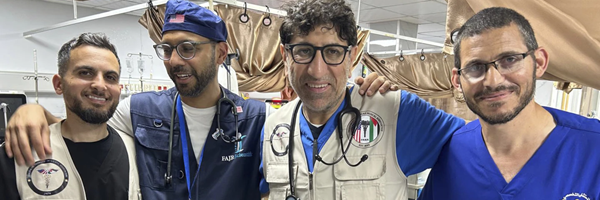Sanitized NGOs: The Occupation’s Latest Gambit to Control Gaza

Yousef Fares, Orinoco Tribune, August 20, 2024 —
The Israeli occupation army is desperately trying to create an alternative to Hamas governing the Gaza Strip after the end of the war. Many of its proposed alternatives have been rejected by multiple different parties that the occupation thought it could rely on to fulfill this role. The leaders of the clans in Gaza rejected a proposal to divvy up the region between them, in a manner similar to the “Sunni Awakening Movement” that had been sponsored by the US military in Iraq. The occupation’s proposals were also rejected by Hamas’ political opponents, the two Fatah factions, one which is loyal to Palestinian Authority President Mahmoud Abbas, and the other UAE-funded “Democratic Reform Current” led by Mohammed Dahlan. Both seem to believe that accepting any authority at this moment, according to enemy conditions, is equivalent to seizing power from atop an Israeli tank.
Faced with these realities, the occupation has recently resorted to amplifying the role of international institutions and “clean” civil society organizations (NGO’s)—sanitized of political or nationalist content—by expanding their authority to perform civil, service, and health roles. The occupation presents these organizations as the only available option to save Gaza’s residents from a state of total humanitarian collapse.
The occupation army believes that Hamas will not be able to disrupt the work of any of these institutions, especially given the residents’ need for any solution that might save them from their suffering. The Israeli plan is based on delegating powers to US and regional Arab health institutions to operate public hospitals by supplying all necessary operational needs from fuel to medicines, and even employing doctors and nurses, provided that they are completely independent from the Health Ministries affiliated with Hamas and Fatah.
This plan is already being tested now that a US NGO is running the European General Hospital in Khan Younis city. Informed sources tell Al-Akhbar that the same strategy will be replicated in the northern Gaza Strip, where work is underway to operate one of the private hospitals in the same manner.
Local sources warn that the hospital-related plan could be extended to all government institutions by building alternative organizations to replace government-run municipal institutions. They would be tasked with cleaning roads, repairing water and sewage networks, and operating wells. This approach is also expected to be adopted in reactivating the Gaza Ministry of Education, however it would be under the control of regional Arab governments.
Those behind this scheme are relying on the fact that there is an urgent need for these vital sectors that have been disrupted by the war. Additionally, the occupation is betting that Hamas will be unable or unwilling to obstruct any international institution providing services for residents in northern and southern Gaza. Even if Hamas is aware of the function of these organizations, stopping them from operating in Gaza would be perceived as if it is preventing new hospitals from treating patients, institutions from providing food to the hungry, or schools from educating students.
Thus, the Israeli plan is not based on completely depriving residents of vital services and requirements, but to instead create an alternative body that is empty of any political or nationalist program. This body would be responsible for transitioning Gaza’s residents from a resistance-oriented “authoritarianism” into purely humanitarian concerns, preoccupied with the complex problems left by the war, and without any political goals or demands.
However, this approach is primarily countered by public awareness, which can determine the intentions and goals of these institutions, as well as the state of popular political consciousness created by the collective Israeli massacres against all Gaza residents. Furthermore, a source in the resistance factions says that “the occupation is jumping to conclusions if it believes that it has fundamentally eliminated the structure of resistance factions and their social and cultural presence in our society.” Among the evidence for this is that ” it considered that its mission in the south was complete, yet the resistance still strikes it on a daily basis in the Tel al-Hawa and Al-Zaytoun axes.” He adds that “trying to disguise its schemes under the pressing humanitarian circumstances does not mean it will be successful. And as long as the occupation continues, the justification for the resistance’s cultural, social, and military existence continues.” He emphasizes that “the occupation’s attempts to simplify this reality will not end it.”
